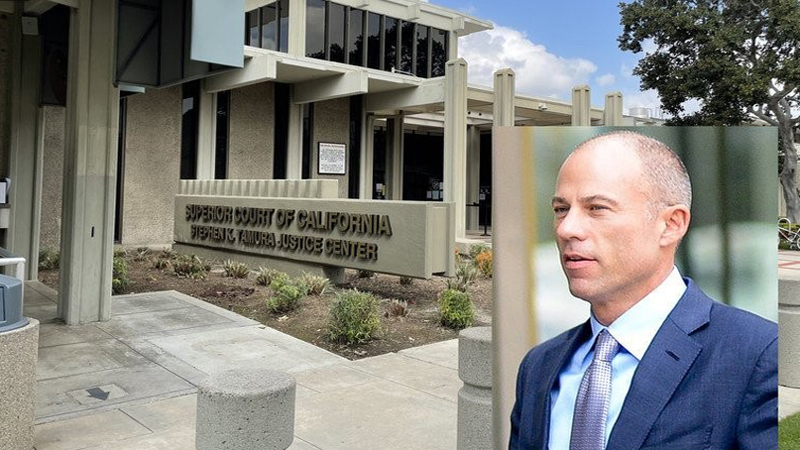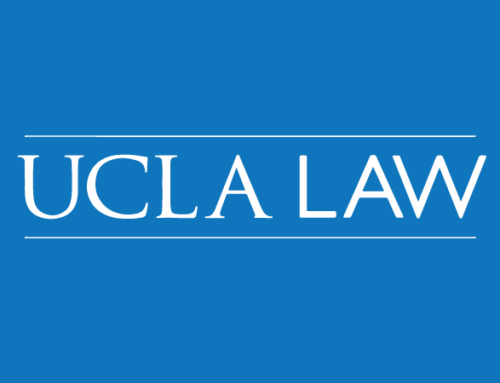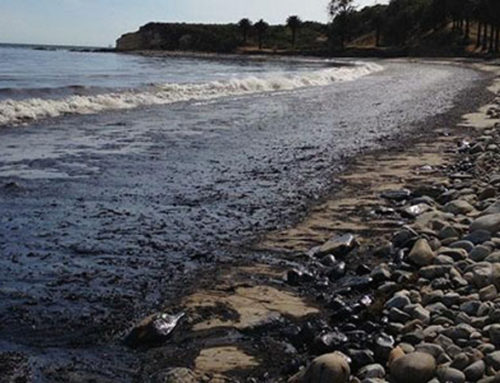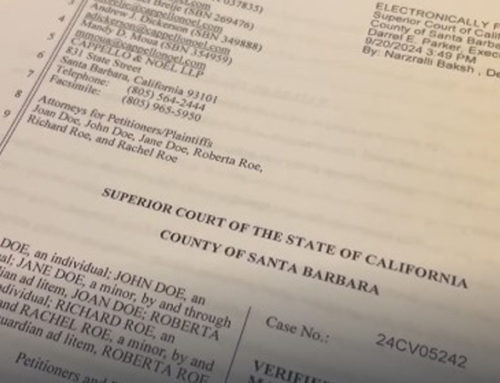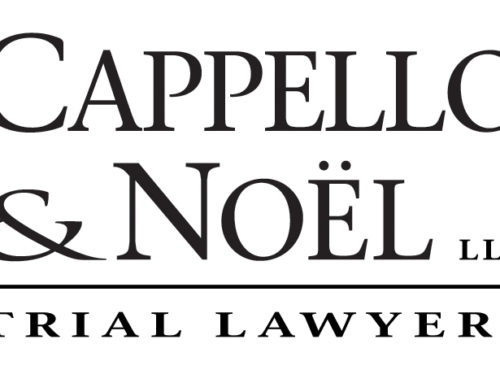An Orange County Superior Court judge has issued a writ commanding a federal prison warden to produce inmate Michael Avenatti for in-person testimony this week at the West Justice Center in Westminster, California, recently renamed the Stephen K. Tamura Justice Center. Avenatti has said he’ll only appear via video and will invoke his Fifth Amendment right against self-incrimination, but the judge said his in-person testimony is preferred so the jury can assess his credibility.
Law.com, April 04, 2022
Michael Avenatti’s first court appearance since he was jailed for defrauding Stormy Daniels might not be in a towering courthouse in one of the two largest U.S. judicial districts but in a modest state superior court branch building in Westminster, California, where a decade-old lawsuit with a former co-counsel is set for trial this week.
Orange County Superior Court Judge Walter Schwarm Friday issued a writ commanding Avenatti’s presence for in-person testimony in Schwarm’s courtroom at the West Justice Center on Thursday.
The case pits Los Angeles lawyer Robert Stoll Jr.’s firm Stoll, Nussbaum & Polakov, which has been pursuing $5.4 million from Avenatti for 11 years, against former clients William Parrish and E. Timothy Fitzgibbons, whom Stoll accuses of breach of contract and aiding and abetting Avenatti, among other claims.
In their defense, Parrish and Fitzgibbons blame Avenatti for lying to them about his fee fight with Stoll while dragging them into unnecessary litigation, and their lawyers asked Schwarm to order Avenatti’s appearance for the jury trial.
Avenatti has said he’ll invoke his Fifth Amendment right against self-incrimination if forced to testify, and even with Schwarm’s new order, which is directed to the prison warden, his courtroom presence is not guaranteed: The federal Bureau of Prisons will decide whether to transport him, and Avenatti has said he’ll appear via video to enter his Fifth pleas but not in person.
“He may not have a choice. I don’t know. Maybe he does. Maybe he can say ‘no’ and the federal authorities have to respect that, and we’re stuck with the remote proceeding,” the judge said Friday.
Prison policy is “not to use force to drag the witness to court,” said lawyer Richard Lloyd of Cappello & Noël, who represents Parrish and Fitzgibbons. If that happens, he said, “so be it” and a remote video appearance will suffice.
“But I think the important thing is to have the wheels in motion for the in-person, because ultimately, he might change his mind,” Lloyd told Schwarm.
Lawsuit Filed in 2011
Filed in June 2011, the case was initiated by Avenatti, who sought a court order on behalf of his now-bankrupt law firm Eagan Avenatti that it didn’t owe Stoll’s firm anything. In the nearly 11 years since, the case has grown to include 3,200 docket entries and appearances by dozens of lawyers, including Tom Girardi, who Avenatti briefly enlisted as an expert on the quantum meruit attorney compensation theory.
It’s gone to California’s Fourth District Court of Appeal at least twice, including a 2014 appeal about a denied arbitration motion in which a judge’s finding that the parties had already engaged in “tons of litigation” was a crucial legal point. The case also includes an unusual shift in legal position that began when Parrish and Fitzgibbons, business partners and former co-workers, said in 2018 they’d realized they’d been conned by Avenatti into pursuing the lawsuit under false pretenses.
Avenatti’s relationship with Parrish and Fitzgibbons dates back to the mid 2000s, when Eagan Avenatti represented them in a malicious prosecution lawsuit against their former employer FLLIR system, a thermal imaging company that had unsuccessfully sued them for trade secrets claims.
Avenatti teamed with Stoll’s firm as well as prominent L.A. lawyer Brian Panish’s Panish Shea & Boyle, and they secured a $39 million federal settlement that included $15.3 million in attorney fees. Parrish and Fitzgibbons fired Stoll in May 2011 and sent the entire fee to Avenatti. Panish got his money, but, as argued in years of litigation, Stoll didn’t get anything.
None of that is in dispute. In the case’s early years, the main contention focused on Avenatti’s claim that Stoll wasn’t lawfully entitled to the $5.4 million, as well as the Stoll firm’s cross-complaint. But Avenatti stopped formally participating in the lawsuit a few years ago and was declared in default, and Stoll’s focus has shifted to his argument that Parrish and Fitzgibbons weren’t unwitting victims but knowing participants in Avenatti’s plan to steal Stoll’s share of attorney fees.
Meanwhile, Parrish and Fitzgibbons are suing Avenatti in a separate superior court action that accuses him of defrauding them and dragging them into “unnecessary litigation rife with undisclosed conflicts of interest and ethical violations,” according to the complaint.
‘Minimal’ Transport Cost
Avenatti has been in federal custody since Feb. 7 after he agreed to surrender in California, rather than risk the judge in the Stormy Daniels trial, U.S. District Judge Jesse Furman in the Southern District of New York, ordered him locked up in New York City immediately after the jury convicted him of wire fraud and aggravated identity theft on Feb. 4.
He’s to be in Furman’s Manhattan courtroom June 2 after Furman denied his request for a remote sentencing and three-month delay, and he also has a 30-month sentence pending for his felony convictions in the Nike extortion case. Meanwhile, his second trial in his Central District of California criminal case has not yet been scheduled as he seeks en banc review from the U.S. Circuit Court of Appeals for the Ninth Circuit on a three-judge panel’s March 16 rejection of his double jeopardy appeal.
Lloyd said in a declaration that after consulting with Bureau of Prisons counsel and the Orange County Sheriff’s Department team that helps transport prisoners, the cost of transporting Avenatti from the Terminal Island federal prison in San Pedro for a daytrip to the West Justice Center, a distance of about 50 miles round trip, is “likely to be minimal if anything.”
According to court filings, Avenatti’s possible testimony has been a point of contention between them and the Keathleys since at least February. Avenatti’s paralegal Emma Hernandez told them all in a March 11 email that Avenatti objects to testifying in person or by video “based on the Fifth Amendment,” and that the case requires dismissal “because no statement of damages was personally served on him before default was sought and entered as required under black letter law in California.”
“The parties have been on notice of this for years and yet have done nothing to vacate the default. Accordingly, dismissal is required,” the email reads.
Lloyd’s Cappello & Noël partner Lawrence Conlan replied that Avenatti’s “change of heart” about testifying was unfortunate, “because it would have given Avenatti a chance to clarify his prior false testimony in this action, acknowledge his gross unethical conduct and for once put the interests of his former clients Mr. Parrish and Mr. Fitzgibbons ahead of his own.”
“We look forward to cross-examining him under oath and exposing even more of his deception and misconduct,” Conlan continued. “If in fact he does invoke the Fifth Amendment to some of our questions, we will assess his response at that time and challenge them when necessary in order to prove his greed and dishonesty.”
‘Nakedly Self-Interested’
Stoll’s lawyers H. James Keathley and Katherine Keathley, who are married, opposed Avenatti appearing, calling it “a complete waste of time and judicial resources” in light of his promise to invoke the Fifth. They said Avenatti’s videotaped deposition from a few years ago should suffice, although Conlan told them in an email that Avenatti “was lying under oath” in the deposition ”and he needs to be cross-examined before the jury.”
“As you should know, his testimony against Mr. Fitzgibbons and Mr. Parrish was unauthorized and done as a malevolent actor,” Conlan wrote on March 4. Conlan also wrote in his March 17 reply to the Keathleys’ opposition that their ”strident advocacy in support of Avenatti … is nakedly self-interested.”
“Stoll simply does not want Avenatti to testify at trial. Why? Because it will be harmful to Stoll’s claims against Mr. Parrish and Mr. Fitzgibbons who are not “judgment proof,” unlike Avenatti who is likely to be imprisoned for a very long time for his many crimes, and who already has millions in civil judgments lined up against him,” Conlan wrote.
Schwarm determined Avenatti is a material witness whose in-person appearance is needed “for examination regarding Mr. Avenatti’s deposition testimony,” according to a March 28 order.
Schwarm and the lawyers drafted the final language for the writ in a courtroom brainstorming session on Friday. Schwarm decided to specify that Avenatti’s in-person appearance is “necessary in order for the jury to assess his credibility within the meaning of [California] Evidence Code 780.”
“I want to get a response from the federal authorities. I don’t want the federal authorities just saying, ‘Hey, you know what? We’re good.’ I want them to understand why we think it’s better for him to be here,” the judge said.
Lloyd said Avenatti’s role is not that of “a passerby who just saw if the light was red or green. There’s going to be a significant involvement.”
“The jury really deserves to look him in the eye,” Lloyd said.
The trial could last five weeks or more. Expected witnesses include Panish, Stoll and Avenatti’s former co-counsel whose current cases include the wrongful death lawsuit against actor Alec Baldwin on behalf of cinematographer Halyna Hutchins’s family over the fatal “Rust” set shooting.
Source: Law.com, Photos: ALM

